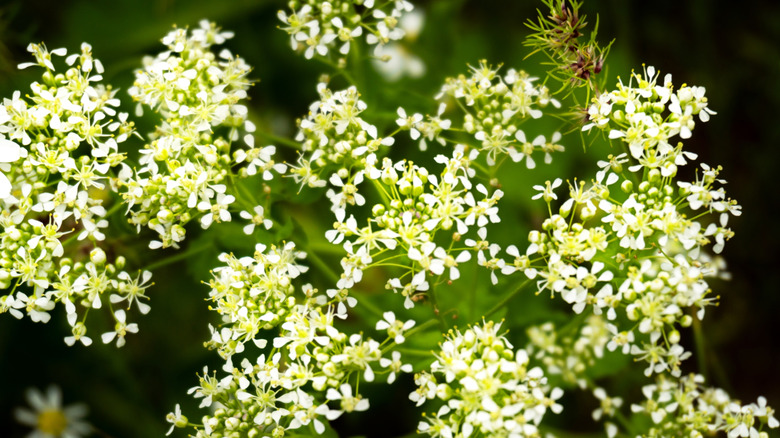The Gorgeous Ground Cover You Can Plant To Help Prevent Weeds From Taking Over
Your garden is your pride and joy, so it can be pretty annoying to see weeds taking over. It may be tempting to blast them with weedkiller, but this can harm other plants and cause groundwater and surface pollution. So, instead of getting out the chemicals, it is helpful to work with nature and not against it to prevent pesky weeds from growing in the garden. A fantastic, natural way of preventing weeds is to grow thriving ground cover plants in your yard. These plants provide a dense cover that suppresses the development and growth of weed seeds. A brilliant, low-maintenance ground cover perennial to consider planting is sweet woodruff (Galium odoratum). With cute, star-like flowers, sweet woodruff gets its sweet name from its fragrance, which is sometimes used in potpourri.
Sweet woodruff can grow about 6 to 12 inches tall and up to 2 feet in length and creates a dense mass of leaves that discourages weeds from growing beneath. It can thrive in USDA hardiness zones 4 to 9 and blooms in late spring, creating beautiful clusters of small flowers. Although it can die back over winter in certain areas, it will appear again in the early spring.
How to plant sweet woodruff for weed prevention
Sweet woodruff does best in full or partial shade, as direct sunlight can scorch its foliage and cause it to go dormant, especially in dry conditions. It prefers moist soil, so it will need to be watered during dry spells. When using this ground cover to prevent common garden weed growth, plant it in areas that have experienced unwanted growth in the previous years, planting them about 1 foot apart.
This ground cover can quickly spread through its creeping rhizomes, so ensure that you are giving the sweet woodruff and the surrounding plants enough space. Planting it under and around larger shrubs and trees and avoiding placing it amongst smaller plants is ideal, as this means there will be fewer issues of competition. Sweet woodruff can take over areas quickly, especially under ideal conditions, and it can be difficult to remove. Be sure you're prepared for the plant to take over the area.
Once your sweet woodruff has established itself, it will expand underground through rhizomes. You can also propagate and spread it through division. During the autumn months or early spring, lift and divide the larger clumps, and then place them in your garden. This is also a great way to encourage healthy growth and maintain vigor.

